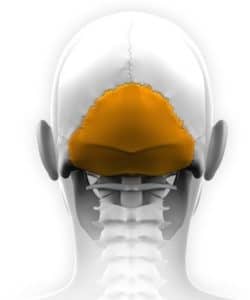Interview with Dr. Arlene Lazaro (Physiatrist)

We’d like you to meet Dr. Arlene Lazaro, the newest member of the Integrated Orthopedics physician team. We sat down with Dr. Lazaro (a Physiatrist) to learn more about why she loves what she does.
Q: Tell me about you!
A: “I was born and raised in NJ and also obtained my undergraduate and medical degree there,” Lazaro said. “Following medical school, I completed a residency in Physical Medicine and Rehabilitation at Icahn School of Medicine at Mount Sinai in NYC. I then went on to pursue a pain medicine fellowship at the University of Nebraska. After training, my husband and I decided to relocate to Arizona to be closer to family and for the beautiful weather! We love the outdoors and so our favorite thing about living in Arizona has been exploring all the hiking trails with our son and two dogs.”
Q: What made you decide to become a pain specialist?
A: “As a physiatrist, my goal is to help people maintain or regain their independence and function but so often their ability to do so is hindered by chronic pain,” Lazaro said. “I wanted to sub-specialize in interventional pain management in order to obtain the tools and skills needed to tackle a patient’s pain complaints from many different angles. I utilize a multimodal, comprehensive, and individualized approach that focuses heavily on physical therapy and interventions.”
Q: What do you enjoy most about your job?
A: “The best part of my job is being able to help patients achieve their functional goals,” Lazaro said. “I love hearing my patients tell me they are able to do more after treatments.”
Q: What made you choose to join the team at Integrated Orthopedics?
“I’m so glad to be joining the team at Integrated Orthopedics as we share the same philosophy of comprehensive, patient-centered care,” Lazaro said. “With the physical therapy center and opening of the new surgery center, I love that patients will have the continuity of care they deserve. I’m excited to help grow the practice and be able to add interventional pain management as a service to patients!”
Q: What are the most common pain issues you see/treat in your practice?
A: “I treat a variety of pain complaints with the most common being occipital neuralgia, neck pain, thoracic pain, low back pain (due to spinal stenosis, degenerated disc disease, disc herniations, facet arthropathy), radiculopathy, neuropathy, sacroiliitis, intercostal neuralgia, shoulder, hip and knee pain, bursitis (ischial and greater trochanteric), myofascial trigger points and complex regional pain syndrome.”
Here is a little more information about the common conditions Dr. Lazaro often treats:

Occipital Neuralgia
Occipital neuralgia is when the nerves that run through the scalp, otherwise known as the occipital nerves, are inflamed, or injured. This can be caused by head or neck injuries, pinched nerves, or muscle tightness in the neck, or from a preexisting condition like osteoarthritis, cervical disc disease, gout, or diabetes. Occipital neuralgia can be treated in nonsurgical ways or through surgery. Nonsurgical options may be the use of heating pads, physical therapy or massage therapy or medication. Surgeries a patient might undergo are occipital nerve stimulation, C2,3 ganglionectomy, or spinal cord stimulation.
Neck pain, Thoracic pain & Low Back Pain
Neck pain, while common, can also lead to or be a symptom of a bigger problem. Thoracic pain is pain that occurs in the thoracic spine, which is located at the back of the chest, in between the shoulder blades. Thoracic spine pain is also very common and often doesn’t need treatment, but much like neck pain, can lead to or be a symptom of a bigger issue. When it comes to lower back pain, Dr. Lazaro often treats patients who are feeling pain due to spinal stenosis, degenerated disc disease, disc herniations, or facet arthropathy. Each of these issues has its own set of symptoms and Dr. Lazaro can work with patients to discover the best ways to treat them.

Radiculopathy
Radiculopathy is a range of symptoms that are caused by the pinching of a nerve root in the spinal column. This pinched nerve can be found at different spots on the spine, such as cervical, thoracic, or lumbar spines. While the symptoms vary based on the location, they often include numbness, tingling, weakness, or pain. In order to move forward with treatment, the pinched nerve needs to be located. Radiculopathy can often cause sharp pain in the back, arms, legs, or shoulders. It can often cause weakness or loss of reflexes in the arms or legs, numbness of the skin, or other pains.
Neuropathy
Neuropathy, or peripheral neuropathy, is a general term used to describe the dysfunction or damage of a nerve that is causing numbness or pain. When it is called peripheral neuropathy, it has to do with the peripheral nervous system which is the network of nerves outside your brain and spinal cord. When nerves are destroyed, this disrupts the way the neurons communicate with each other and with the brain. Neuropathy can affect one nerve or one single nerve type, or many peripheral nerves throughout the body which is called polyneuropathy. Neuropathy often feels like numbness, such as the pins or needles, “falling asleep” feeling. It’s often treated through medicine, physical therapy, surgery, or lifestyle changes.
Sacroiliitis
Sacroiliitis is the inflammation of your sacroiliac joints, either one or both. These sacroiliac joints are located where the lower spine and pelvis connect. This causes pain in the lower back or even the buttocks. Often, sacroiliitis can be confused with standard lower back pain, but once diagnosed it can be treated with physical therapy or medications. Sometimes, sacroiliitis can be caused by arthritis, infections in the sacroiliac joints, pregnancy because the sacroiliac joints stretch and move during childbirth, or a traumatic injury such as a vehicle accident, fall or damage to the sacroiliac joints.
Intercostal Neuralgia
Unlike the other common issues on the list, intercostal neuralgia is a form of nerve pain that affects the area below the ribs. While this nerve pain is in a unique area, the symptoms are very similar to other ones on this list. The symptoms include sharp pain, aching pain, radiating pain, burning pain, or stabbing pain. This pain might also be increased or worsened with chest movement, like jumping jacks, coughing, or sneezing. These jerking movements can cause pain and inflammation. Intercostal neuralgia is most often treated with medication, physical therapy, or doctoral procedures like an intercostal nerve block.
Shoulder, Hip & Knee Pain
Shoulder pain is a very broad issue that often has a few different causes and can be attributed to several different issues. Shoulder pain could be bursitis, tendinitis, tendon tears, impingement, instability, arthritis, and so many others. Hip pain and knee pain are the same. Hip pain specifically can also stem from lower back pain, which may be caused by many of the other issues listed above. Knee pain might also be paired with any of these other conditions, but can also be caused by other issues, like a torn ACL, dislocations of the kneecap, or can be caused by hip or foot pain.
Bursitis
Bursitis is related to the bursa, which is a closed and fluid-filled sac that works as a gliding surface or a cushion that helps reduce friction between tissues of the body. The major bursae are found in the shoulders, elbows, hips, and knees. Bursitis is the inflammation of these bursae. Dr. Lazaro often deals with ischial and greater trochanteric bursitis, which is the inflammation of the bursae in the pelvis and hips. Trochanteric bursitis is treated with medication like nonsteroidal anti-inflammatory drugs, corticosteroid injections, physical therapy, or surgery.
Myofascial Trigger Points
Myofascial trigger points are points within the musculoskeletal system, which is the system that provides the body support, form, stability, and movement. Basically, myofascial trigger points cause pain in the muscles that often gets worse with movement and when the muscles in question are strained or stretched.
Complex regional pain syndrome
Complex regional pain syndrome is a broad term that is used to describe the lasting pain following an injury in the arm or leg. This can happen after a major injury, surgery, or even after a stroke or heart attack. Complex regional pain syndrome is relatively uncommon, but early treatment is warranted.
Q: What are your areas of specialty?
A: “There are a multitude of interventions that can potentially benefit patients with low back pain, and it remains my favorite area to treat.”
Q: What are some new technologies/advancements in pain management that you’re excited about offering at IOA?
A: I’m super excited about being able to offer spinal cord stimulation to patients with low back and leg pain that has not responded to conventional treatment or those who have failed after surgery and want to avoid further surgeries. Vertiflex is also a therapy I’m excited to offer to patients with spinal stenosis. I also offer radiofrequency ablation to disrupt pain signals from arthritic joints in the spine.
Welcome, Dr. Arlene Lazaro to the Integrated Orthopedics team! Dr. Lazaro is a board-certified interventional pain physician and was double board certified in Physical Medicine and Rehabilitation and Pain Medicine by the American Board of Physical Medicine and Rehabilitation (ABPMR). If you are interested in getting in contact with or setting up an appointment with Dr. Lazaro, contact Integrated Orthopedics.
